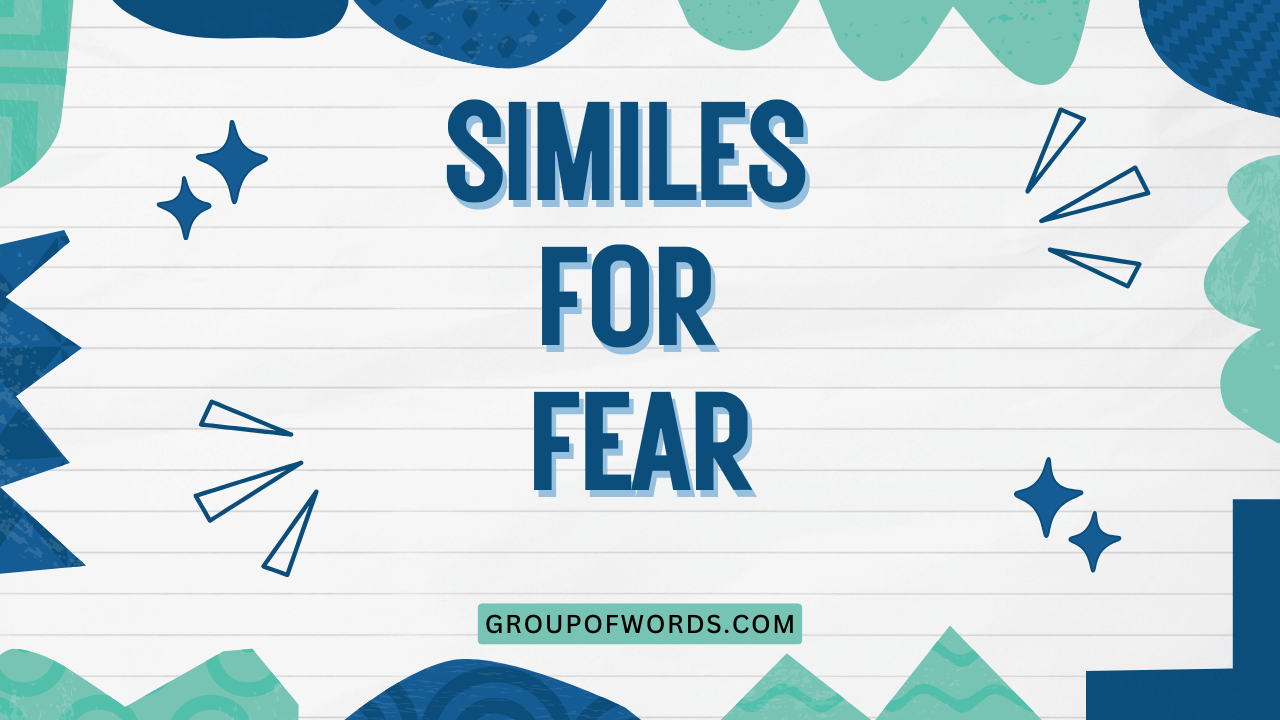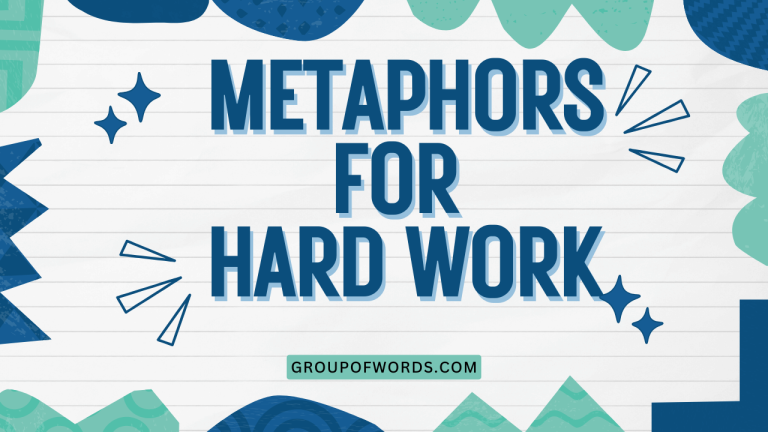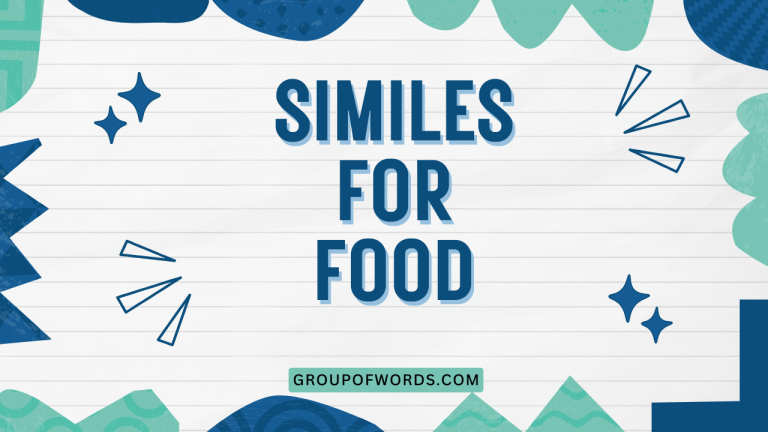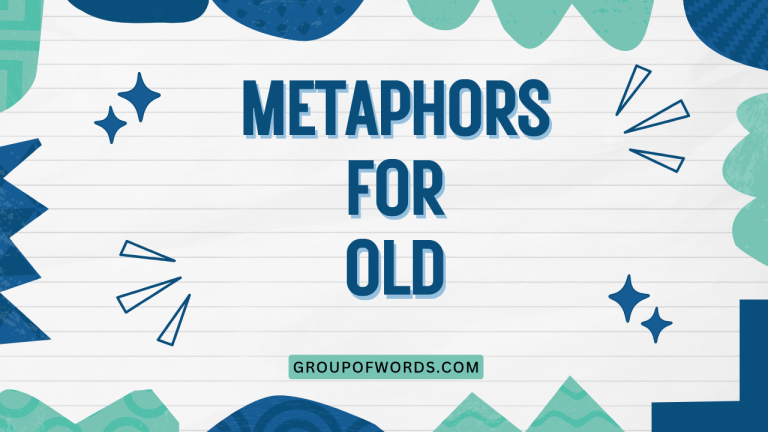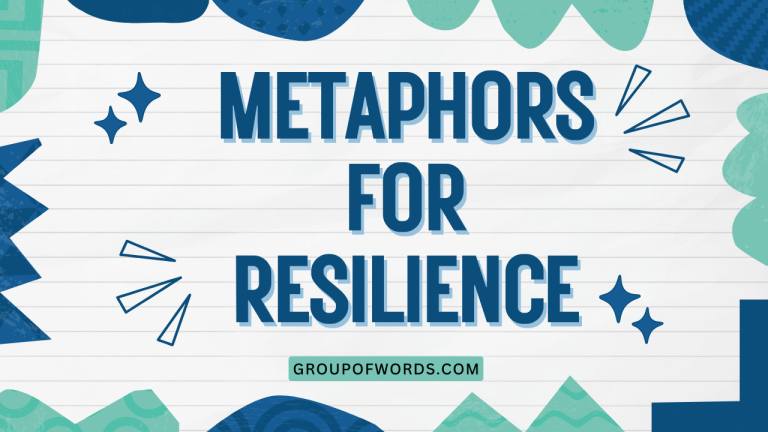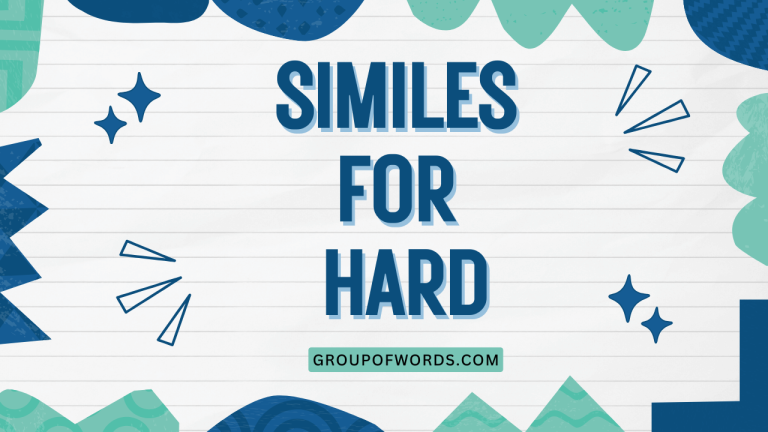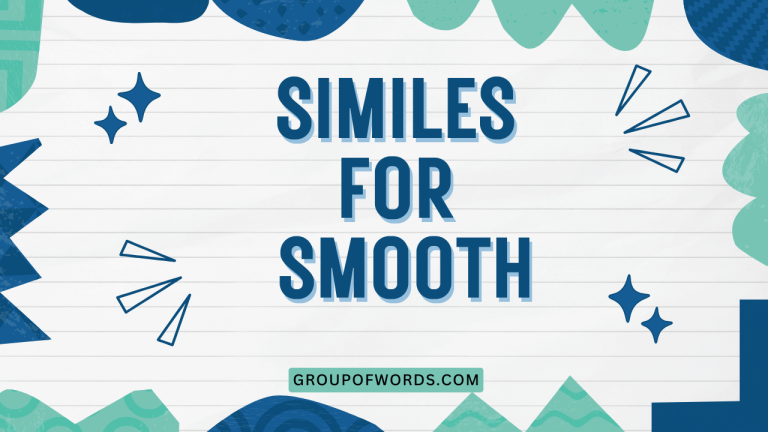Similes for Fear: Mastering Figurative Language
Understanding how to use similes to describe fear is crucial for enhancing your descriptive writing and communication skills. Similes allow you to create vivid and relatable images in the reader’s mind, making your writing more engaging and impactful.
This article explores the definition, structure, and various examples of similes specifically used to portray fear. Whether you are a student, writer, or language enthusiast, this guide will equip you with the knowledge and tools to effectively use similes to express fear in your writing and speech.
Mastering this aspect of figurative language will significantly improve your ability to convey emotions and create compelling narratives.
This article provides a comprehensive overview of similes for fear, including definitions, examples, and practice exercises. It is designed to help learners of all levels, from beginners to advanced, understand and apply this aspect of English grammar effectively.
By the end of this article, you will be able to identify, create, and use similes to vividly describe fear in various contexts.
Table of Contents
- Definition of Simile
- Structural Breakdown of Similes
- Types of Fear Expressed Through Similes
- Examples of Similes for Fear
- Usage Rules for Similes
- Common Mistakes with Similes
- Practice Exercises
- Advanced Topics: Nuances of Simile Usage
- Frequently Asked Questions
- Conclusion
Definition of Simile
A simile is a figure of speech that compares two unlike things using the words “like” or “as.” The purpose of a simile is to create a vivid image or enhance understanding by drawing a parallel between something familiar and something less known. Similes are commonly used in literature, poetry, and everyday speech to make descriptions more engaging and relatable. Unlike metaphors, which directly equate two things, similes only suggest a resemblance.
In the context of expressing fear, similes can be incredibly powerful. They allow writers and speakers to convey the intensity and nature of fear by comparing it to something tangible and easily understood.
For instance, saying someone was “as pale as a ghost” communicates their fear through a visual comparison, making the emotion more palpable to the audience.
Classification of Similes
Similes can be classified based on what they compare and the effect they aim to achieve. Some common classifications include:
- Descriptive Similes: These similes focus on describing a quality or characteristic. Example: “He was as quiet as a mouse.”
- Emotional Similes: These similes aim to convey emotions. Example: “She felt as anxious as a cat in a room full of rocking chairs.”
- Explanatory Similes: These similes help explain a concept or idea. Example: “The process was as simple as boiling water.”
Function of Similes
The primary function of a simile is to enhance understanding and create a vivid image in the reader’s or listener’s mind. By drawing a comparison between two different things, similes can make abstract concepts more concrete and relatable.
In the context of fear, similes can help to convey the intensity, nature, and impact of the emotion on an individual.
Contexts of Simile Use
Similes are used in various contexts, including:
- Literature: Novels, short stories, and poems often use similes to enrich descriptions and evoke emotions.
- Speech: Everyday conversations and public speaking frequently employ similes to make points more understandable and engaging.
- Advertising: Similes can be used to highlight the qualities of a product by comparing it to something desirable.
- Academic Writing: While less common, similes can be used in academic writing to explain complex concepts in a more accessible way.
Structural Breakdown of Similes
The structure of a simile is relatively simple, typically consisting of two parts connected by either “like” or “as.” Understanding this structure is essential for creating effective and clear similes.
The basic structure of a simile is:
A + LIKE/AS + B
- A: The subject being described.
- LIKE/AS: The comparative word.
- B: The object or concept to which the subject is being compared.
For example, in the simile “He was as pale as a ghost,” “He” is the subject (A), “as” is the comparative word, and “a ghost” is the object of comparison (B).
Elements of a Simile
A well-constructed simile typically includes the following elements:
- Subject: The thing being described.
- Comparative Word: The word “like” or “as” that connects the subject and the object of comparison.
- Object of Comparison: The thing to which the subject is being compared.
- Shared Quality: The characteristic that the subject and object of comparison have in common.
For example, in the simile “Her hands trembled like leaves in the wind,” the subject is “Her hands,” the comparative word is “like,” the object of comparison is “leaves in the wind,” and the shared quality is trembling or shaking.
Patterns and Rules
While the structure of a simile is straightforward, there are some rules to keep in mind to ensure clarity and effectiveness:
- Clarity: The comparison should be clear and easily understood. Avoid using obscure or overly complex objects of comparison.
- Relevance: The shared quality between the subject and object of comparison should be relevant and meaningful.
- Originality: While common similes can be effective, strive to create original comparisons that add depth and interest to your writing.
Types of Fear Expressed Through Similes
Fear is a complex emotion with many facets. Similes can be used to express different types of fear, each with its own nuances and characteristics.
Physical Fear
Physical fear is the fear of bodily harm or danger. It is often associated with immediate threats to one’s safety and well-being.
Similes used to describe physical fear often focus on the body’s response to danger, such as trembling, sweating, and increased heart rate.
Emotional Fear
Emotional fear is the fear of psychological harm or distress. It can include the fear of rejection, failure, or loss.
Similes used to describe emotional fear often focus on the internal experience of the emotion, such as anxiety, dread, and despair.
Existential Fear
Existential fear is the fear of the unknown, the meaninglessness of life, or death. It is a deep and profound fear that can be difficult to articulate.
Similes used to describe existential fear often focus on the vastness and uncertainty of existence.
Examples of Similes for Fear
The following sections provide extensive examples of similes used to express different types of fear. Each section includes a table with numerous examples to illustrate the variety and effectiveness of similes in conveying fear.
Physical Fear
Physical fear is often immediate and visceral. These similes aim to capture that sense of urgent threat and bodily response.
The following table provides examples of similes used to describe physical fear:
| Simile | Explanation |
|---|---|
| He was as still as a statue, fearing any movement would betray him. | Describes the paralysis of fear, where even the smallest movement feels dangerous. |
| Her heart pounded like a drum solo, each beat echoing her terror. | Illustrates the increased heart rate and intensity of fear. |
| He trembled like a leaf in a storm, unable to control his shaking. | Conveys the uncontrollable physical response to intense fear. |
| She felt as exposed as a deer in headlights, vulnerable and paralyzed. | Highlights the feeling of vulnerability and helplessness in the face of danger. |
| His skin crawled like ants were marching beneath it, a response to the creeping dread. | Describes the physical sensation of fear-induced goosebumps or shivers. |
| He was as frozen as a glacier, unable to move or speak. | Illustrates the immobilizing effect of extreme fear. |
| Her breath hitched like a broken machine, each gasp a struggle. | Conveys the difficulty of breathing when experiencing intense fear. |
| He felt as though his blood had turned to ice, chilling him from the inside out. | Describes the sensation of coldness and numbness associated with fear. |
| She was as silent as the grave, afraid to make a sound. | Highlights the fear of being detected, leading to complete silence. |
| His eyes were as wide as saucers, reflecting the horror he witnessed. | Illustrates the physical manifestation of shock and fear in the eyes. |
| He ran as fast as a cheetah, driven by pure terror. | Conveys the speed and urgency motivated by fear. |
| She was as stiff as a board, her muscles tense with fear. | Describes the physical tension and rigidity caused by fear. |
| His voice was as thin as a whisper, barely audible due to his fear. | Illustrates the weakening of the voice when someone is afraid. |
| He felt like a cornered animal, desperate to escape. | Conveys the feeling of being trapped and the instinct to flee. |
| She was as light as a feather, her body reacting without her control. | Highlights the feeling of disembodiment and lack of control. |
| His hands were as clammy as a wet towel, soaked in nervous sweat. | Describes the physical manifestation of anxiety and fear through sweating. |
| He felt like a puppet on a string, controlled by his fear. | Conveys the feeling of being powerless and manipulated by fear. |
| She screamed as loud as a siren, her voice filled with terror. | Illustrates the intensity and urgency of her fear through a loud scream. |
| He jumped like a startled cat, reacting to the sudden noise. | Describes the involuntary physical reaction to a sudden scare. |
| His legs felt like lead, heavy and difficult to move. | Conveys the feeling of heaviness and fatigue caused by fear. |
| He was as jumpy as a jackrabbit, alert to any perceived threat. | Describes the heightened state of alertness and reactivity caused by fear. |
| She felt as fragile as glass, easily shattered by the slightest shock. | Highlights the feeling of vulnerability and fragility in the face of fear. |
| He was as pale as death, his face drained of all color. | Illustrates the physical manifestation of extreme fear through pallor. |
| She felt like a small boat in a stormy sea, tossed about by the waves of fear. | Conveys the feeling of being overwhelmed and helpless in the face of a powerful emotion. |
Emotional Fear
Emotional fear is more internal and psychological. These similes focus on the feelings of dread, anxiety, and despair.
The following table provides examples of similes used to describe emotional fear:
| Simile | Explanation |
|---|---|
| Her anxiety felt like a dark cloud hanging over her, obscuring all joy. | Describes the oppressive and pervasive nature of anxiety. |
| He felt as hollow as an empty shell, devoid of hope or courage. | Conveys the feeling of emptiness and despair caused by fear. |
| Her heart ached like a constant wound, throbbing with fear and sorrow. | Illustrates the emotional pain and suffering associated with fear. |
| He felt like he was drowning in a sea of despair, unable to find a way out. | Highlights the feeling of being overwhelmed and suffocated by negative emotions. |
| Her mind raced like a runaway train, filled with anxious thoughts and worries. | Describes the rapid and uncontrollable thoughts associated with anxiety. |
| He felt as lost as a ship without a compass, adrift in a sea of uncertainty. | Conveys the feeling of disorientation and confusion caused by fear. |
| Her hopes crumbled like sandcastles before the tide, washed away by fear. | Illustrates the destruction of hope and optimism by fear. |
| He felt as trapped as a bird in a cage, longing for freedom from his fears. | Conveys the feeling of confinement and restriction caused by fear. |
| Her dreams dissolved like mist in the morning sun, replaced by the harsh reality of fear. | Illustrates the fading of dreams and aspirations due to fear. |
| He felt like he was walking on eggshells, afraid to make a wrong move. | Highlights the feeling of vulnerability and the need to be cautious. |
| She felt as vulnerable as a newborn baby, exposed to the harshness of the world. | Conveys the feeling of helplessness and defenselessness. |
| His confidence shattered like glass, leaving him feeling insecure and exposed. | Illustrates the destruction of self-assurance by fear. |
| He felt like he was carrying the weight of the world on his shoulders, burdened by fear and responsibility. | Conveys the feeling of being overwhelmed by pressure and anxiety. |
| Her spirit felt as withered as an old tree, drained of life and vitality. | Illustrates the draining effect of fear on one’s energy and enthusiasm. |
| He felt like he was standing on the edge of a cliff, peering into the abyss of his fears. | Conveys the feeling of being on the verge of something terrifying. |
| She felt as invisible as a ghost, unnoticed and unheard due to her fear. | Highlights the feeling of isolation and insignificance. |
| His courage felt as thin as ice, easily broken under pressure. | Illustrates the fragility of courage in the face of fear. |
| He felt like he was trapped in a nightmare, unable to escape the horrors of his mind. | Conveys the feeling of being trapped in a terrifying mental state. |
| Her heart felt as heavy as a stone, weighed down by sadness and fear. | Illustrates the emotional burden of fear and sorrow. |
| He felt like he was walking through a fog, unable to see clearly due to his fear. | Conveys the feeling of confusion and disorientation. |
| She felt as small as an ant, insignificant in the face of her overwhelming fear. | Highlights the feeling of powerlessness and insignificance. |
| His hope flickered like a dying ember, struggling to stay alive in the darkness of fear. | Illustrates the diminishing of hope in the presence of fear. |
| He felt like he was being swallowed by darkness, consumed by his fears. | Conveys the feeling of being overwhelmed and engulfed by negative emotions. |
| She felt as numb as ice, unable to feel anything but fear. | Highlights the emotional detachment and lack of sensation caused by fear. |
Existential Fear
Existential fear deals with the big questions of life and death. These similes often reflect a sense of unease about the unknown.
The following table provides examples of similes used to describe existential fear:
| Simile | Explanation |
|---|---|
| The future felt as uncertain as a blank canvas, filled with endless possibilities and potential terrors. | Describes the fear of the unknown and the uncertainty of what lies ahead. |
| He felt as insignificant as a grain of sand on a vast beach, overwhelmed by the immensity of the universe. | Conveys the feeling of being small and unimportant in the grand scheme of things. |
| The thought of death loomed like a shadow, casting a pall over his every moment. | Illustrates the constant presence of mortality and its impact on one’s life. |
| He felt like he was standing on the edge of an abyss, gazing into the infinite void of existence. | Conveys the feeling of being confronted with the vastness and emptiness of the universe. |
| The meaning of life felt as elusive as a dream, constantly slipping from his grasp. | Describes the struggle to find purpose and meaning in a world that often seems meaningless. |
| He felt as lost as an astronaut adrift in space, disconnected from everything familiar. | Conveys the feeling of isolation and disorientation in the face of existential questions. |
| The universe felt as indifferent as a cold, distant star, uncaring of his existence. | Illustrates the perceived lack of concern from the cosmos towards individual lives. |
| He felt like he was trapped in a cosmic play, a puppet dancing to the tune of fate. | Conveys the feeling of being controlled by external forces and lacking free will. |
| The search for truth felt as endless as a journey through a labyrinth, with no clear path or destination. | Describes the difficulty and frustration of seeking answers to fundamental questions. |
| He felt as fragile as a butterfly’s wing, easily crushed by the weight of existence. | Highlights the vulnerability and impermanence of life. |
| The passage of time felt as relentless as a river, carrying him inexorably towards the unknown. | Conveys the feeling of being swept along by the unstoppable flow of time. |
| He felt like he was living in a simulation, questioning the reality of his experiences. | Illustrates the unease and uncertainty about the nature of reality. |
| The fear of oblivion felt as vast as the ocean, swallowing him whole. | Conveys the overwhelming fear of non-existence after death. |
| He felt as temporary as a shooting star, destined to burn out and disappear. | Highlights the fleeting nature of life and the inevitability of death. |
| The universe felt as silent as a tomb, devoid of answers to his deepest questions. | Illustrates the lack of clear communication or guidance from the cosmos. |
| He felt like he was wandering through a desert, searching for meaning in a barren landscape. | Conveys the feeling of emptiness and the struggle to find purpose. |
| The search for immortality felt as futile as trying to catch the wind, an impossible task. | Describes the ultimate impossibility of escaping death. |
| He felt as alone as the last person on Earth, isolated in his existential dread. | Highlights the feeling of being utterly alone in one’s fears and doubts. |
| The weight of existence felt as heavy as lead, dragging him down into despair. | Conveys the burden of consciousness and the responsibility of living. |
| He felt like he was trapped in a paradox, unable to reconcile the contradictions of life. | Illustrates the struggle to make sense of the inherent contradictions and uncertainties of existence. |
Usage Rules for Similes
Using similes effectively requires understanding the rules that govern their construction and application. Here are some key rules to keep in mind:
- Use “like” or “as”: Always use one of these words to connect the subject and object of comparison.
- Ensure a clear comparison: The comparison should be easily understood and relevant to the context.
- Avoid clichés: While common similes can be effective, strive for originality to make your writing more engaging.
- Maintain consistency: Ensure that the simile aligns with the overall tone and style of your writing.
Exceptions and Special Cases
While the rules for using similes are generally straightforward, there are some exceptions and special cases to consider:
- Implied Similes: Sometimes, the comparative word (“like” or “as”) may be omitted for stylistic effect. However, this is less common and should be used sparingly.
- Extended Similes: These involve a more detailed and elaborate comparison, often spanning multiple sentences or paragraphs.
Common Mistakes with Similes
Even experienced writers can make mistakes when using similes. Here are some common errors to avoid:
- Using metaphors instead of similes: Remember that similes use “like” or “as,” while metaphors directly equate two things.
- Creating illogical comparisons: Ensure that the subject and object of comparison have a clear and relevant shared quality.
- Overusing clichés: Strive for originality to make your writing more engaging and impactful.
| Incorrect | Correct | Explanation |
|---|---|---|
| He was a ghost, he was so scared. | He was as pale as a ghost, he was so scared. | The first sentence is a metaphor, while the second is a simile using “as.” |
| She was as fast as a tree. | She was as fast as a cheetah. | The first comparison is illogical, while the second is clear and relevant. |
| He was as brave as a lion. | He was as brave as a soldier facing the enemy. | The first simile is a cliché, while the second is more original. |
Practice Exercises
Test your understanding of similes with the following practice exercises. Each exercise includes multiple questions to challenge your knowledge and skills.
Exercise 1: Identifying Similes
Identify the similes in the following sentences:
| Question | Answer |
|---|---|
| 1. Her voice was as smooth as silk. | as smooth as silk |
| 2. The news hit him like a ton of bricks. | like a ton of bricks |
| 3. He is a shining star. | (No simile – this is a metaphor) |
| 4. The child slept like a log. | like a log |
| 5. She was as quick as a fox. | as quick as a fox |
| 6. The room was as cold as ice. | as cold as ice |
| 7. His anger was a raging fire. | (No simile – this is a metaphor) |
| 8. They fought like cats and dogs. | like cats and dogs |
| 9. The test was as easy as pie. | as easy as pie |
| 10. He ran like the wind. | like the wind |
Exercise 2: Completing Similes
Complete the following similes with an appropriate comparison:
| Question | Answer |
|---|---|
| 1. He was as quiet as _____. | a mouse |
| 2. She felt like _____. | a fish out of water |
| 3. The pain was as sharp as _____. | a knife |
| 4. They were as different as _____. | night and day |
| 5. The task was as simple as _____. | ABC |
| 6. The sky was as blue as _____. | the ocean |
| 7. He ate like _____. | a horse |
| 8. She sang like _____. | an angel |
| 9. The joke was as old as _____. | the hills |
| 10. He worked like _____. | a dog |
Exercise 3: Creating Similes for Fear
Create similes to describe the following scenarios involving fear:
| Scenario | Example Simile |
|---|---|
| 1. Walking alone in a dark forest. | He felt as vulnerable as a lamb in a wolf’s den. |
| 2. Giving a speech in front of a large audience. | His palms were as sweaty as a summer’s day, and his voice trembled like a leaf in the wind. |
| 3. Watching a scary movie. | She jumped like a startled cat at every sudden sound. |
| 4. Waiting for important test results. | His stomach churned like a washing machine, filled with anxiety and dread. |
| 5. Facing a dangerous situation. | He felt as exposed as a deer in headlights, paralyzed by fear. |
| 6. Hearing a strange noise at night. | She was as still as a statue, straining to hear any further sounds. |
| 7. Being lost in a foreign city. | He felt as lost as a ship without a compass, adrift in a sea of unfamiliar streets. |
| 8. Realizing you forgot something important. | His heart sank like a stone, realizing the gravity of his mistake. |
| 9. Anticipating a painful medical procedure. | He felt as helpless as a child, dreading the inevitable discomfort. |
| 10. Preparing for a job interview. | His nerves were as tight as piano wires, stretched to the breaking point. |
Advanced Topics: Nuances of Simile Usage
For advanced learners, understanding the nuances of simile usage can elevate their writing to a higher level. This includes exploring the use of less common comparative words, creating more complex and layered comparisons, and using similes to achieve specific stylistic effects.
Using Less Common Comparative Words: While “like” and “as” are the most common comparative words, others can be used to add variety and nuance to your similes. Examples include “similar to,” “resembling,” and “akin to.”
Creating Complex Comparisons: Instead of simple comparisons, try creating more layered and complex similes that involve multiple elements and ideas. This can add depth and richness to your writing.
Achieving Specific Stylistic Effects: Similes can be used to achieve a variety of stylistic effects, such as creating humor, irony, or pathos. Experiment with different types of comparisons to see how they impact the overall tone and mood of your writing.
Frequently Asked Questions
Here are some frequently asked questions about similes:
- What is the difference between a simile and a metaphor?
A simile compares two things using “like” or “as,” while a metaphor directly equates two things without using these words. For example, “He is as brave as a lion” is a simile, while “He is a lion” is a metaphor.
- Can a simile be a cliché?
Yes, many common similes have become clichés due to overuse. While clichés can be effective in certain contexts, it is generally better to strive for originality to make your writing more engaging.
- How can I create more original similes?
To create more original similes, try thinking outside the box and drawing comparisons between unexpected things. Also, focus on the specific qualities you want to highlight and look for objects or concepts that share those qualities in a unique way.
- Is it okay to use similes in formal writing?
While similes are more common in creative writing, they can also be used in formal writing to explain complex concepts in a more accessible way. However, it is important to use them sparingly and ensure that they are appropriate for the tone and style of the writing.
- What are some common mistakes to avoid when using similes?
Some common mistakes include using metaphors instead of similes, creating illogical comparisons, and overusing clichés. Always double-check your similes to ensure that they are clear, relevant, and original.
- How do similes enhance writing?
Similes enhance writing by making descriptions more vivid and relatable. They allow writers to convey emotions, create imagery, and explain complex ideas in a more engaging and understandable way.
- Can similes be used in everyday conversation?
Yes, similes are commonly used in everyday conversation to make points more understandable and engaging. They can add color and personality to your speech.
- How do I choose the best simile for a particular situation?
Choose a simile that clearly and effectively conveys the intended meaning or emotion. Consider the audience and the context, and select a comparison that will resonate with them.
Conclusion
Mastering the use of similes for fear can greatly enhance your ability to express emotions vividly and create compelling narratives. By understanding the structure, types, and usage rules of similes, you can effectively convey the intensity and nature of fear in your writing and speech.
Remember to strive for originality and clarity in your comparisons to make your descriptions more engaging and impactful.
Continue practicing and experimenting with similes to further develop your skills. Pay attention to how other writers use similes and try to incorporate their techniques into your own writing.
With practice, you will become more confident and proficient in using similes to express fear and other emotions effectively.
